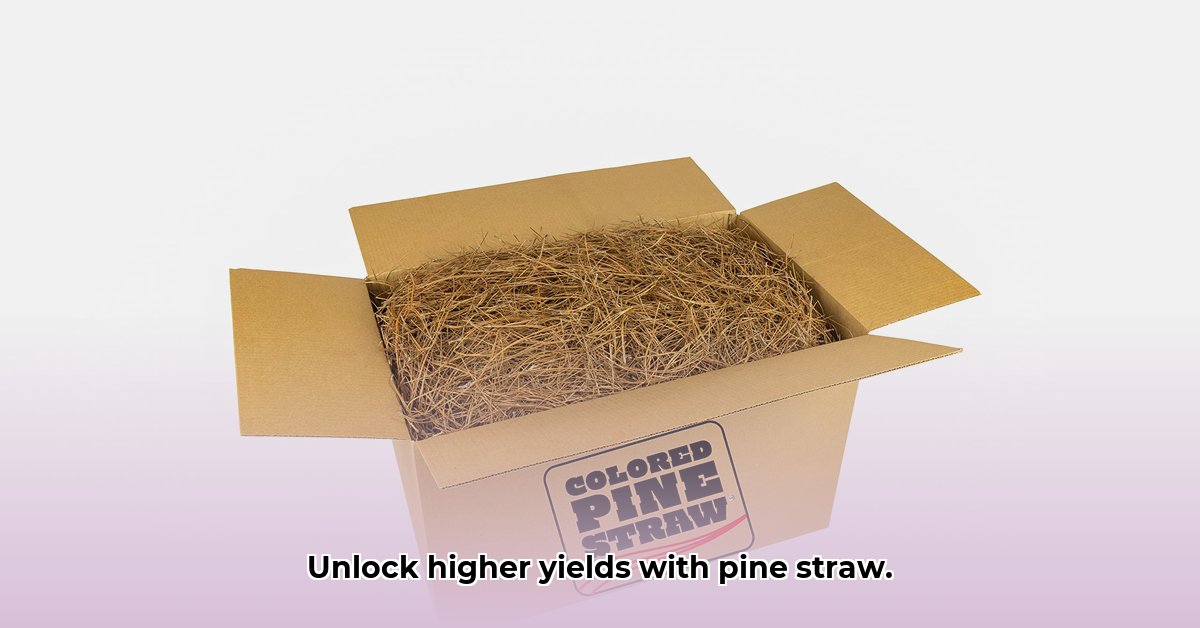
Want healthier soil and bigger harvests? Pine straw mulch, readily available at Tractor Supply, could be your secret weapon. This practical guide will walk you through selecting, applying, and maintaining pine straw for optimal crop growth. We'll address common challenges and offer tips to maximize your yields. For more local resources, check out your local Tractor Supply.
Selecting the Right Pine Straw
Choosing the right pine straw is the first step to success. At Tractor Supply, consider these factors:
- Bale Size: Opt for a size that's manageable for your application method. Larger bales may offer better value, but smaller ones are easier to handle.
- Quality: Look for bales with consistent needle length and minimal debris. Avoid those that appear dirty, moldy, or contain excessive foreign material. A rich, golden color indicates high quality.
- Pine Straw Type: Different pine species may be available; consult a Tractor Supply associate for recommendations tailored to your region and crops. They can provide valuable insights into local varieties best suited for your needs.
Applying Pine Straw: A Step-by-Step Guide
Follow these steps for optimal pine straw application:
Soil Preparation: Clear the area of weeds, rocks, and debris. For improved soil aeration and pine straw integration, lightly till the soil before application. This enhances nutrient absorption and water retention.
Determining Application Depth and Rate: The ideal depth and amount of pine straw depend on the crop type, soil conditions, and climate. Research recommended rates for your specific needs. A general guideline is a 2-4 inch layer, but adjust as necessary. Consider starting with a smaller test area to fine-tune your application before tackling larger plots.
Safe Handling and Spreading: Wear gloves to protect your hands from potential irritation. Carefully unpack the bales and evenly distribute the pine straw, avoiding thick clumps or thin spots. Aim for consistent coverage across your planting area. Even distribution prevents uneven moisture and ensures optimal results.
Maintenance: Pine straw decomposes over time. Monitor the layer throughout the growing season and replenish as needed to maintain the desired depth (typically 2-4 inches). The frequency of replenishment depends on factors like climate, soil composition, and the type of pine straw utilized.
Understanding Pine Straw's Benefits
Pine straw offers numerous advantages beyond simply suppressing weeds:
- Improved Soil Health: As it decomposes, pine straw releases vital nutrients, enriching your soil.
- Enhanced Water Retention: It acts as a natural mulch, helping your soil retain moisture, reducing the frequency of watering, and saving you water and time in the process.
- Weed Suppression: A proper layer of pine straw effectively blocks sunlight, preventing many weeds from germinating and thriving.
Troubleshooting Common Issues
Even with careful application, you might encounter challenges:
Weed Breakthrough: A thicker layer of pine straw can often resolve this. In persistent cases, consider using a pre-emergent herbicide. Remember, however, that addressing the initial problem, lack of sufficient coverage, is the first solution to consider.
Uneven Moisture Distribution: Uneven application can lead to inconsistent moisture levels. Ensure even distribution of the pine straw. Adjusting your watering techniques can aid in even saturation. Careful planning and execution go a long way in maintaining even moisture levels.
Pest Infestations: Pine straw itself isn't a pest deterrent, although it can help create a less hospitable environment in some cases. Monitor your crops for infestations and employ appropriate pest control measures if needed. Your local agricultural extension service can provide valuable guidance on pest control specific to your area.
Conclusion: Maximizing Your Harvest with Pine Straw
Utilizing pine straw mulch from Tractor Supply offers a simple yet effective method for enhancing your soil health and improving crop yields. By following this guide's steps, you'll unlock the potential of this readily available, natural resource, fostering stronger, healthier plants, and eventually, a more bountiful harvest. Remember, consistent monitoring and maintenance are key to long-term success! Always consult your local agricultural extension service for specific recommendations relevant to your region and crops.